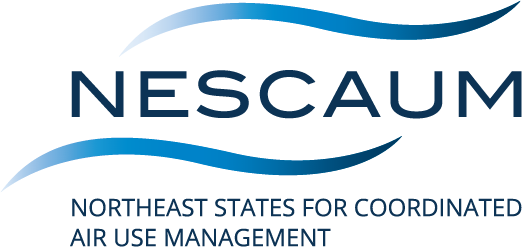NESCAUM Statement on EPA’s Phase 3 Greenhouse Gas Emissions Standards for Heavy-Duty Vehicles
(March 29, 2024, Boston, MA) NESCAUM commends the U.S. Environmental Protection Agency (EPA) for finalizing its regulation establishing greenhouse gas (GHG) emission standards for model year 2027 through 2032 heavy-duty vehicles. The new rule will provide much-needed reductions of GHG emissions from trucks and will help address the climate crisis.
The transportation of freight and people is the largest source of GHGs in the U.S., with trucks emitting 30 percent of on-road vehicle GHGs.
NESCAUM welcomes today’s action and supports continued federal action to reduce pollution for heavy-duty trucks.
Paul Miller, NESCAUM Executive Director, said, "This rule is vital to stabilizing our climate and providing improved public health outcomes across the nation, especially for people living or working near transportation corridors and trucking hubs who are exposed to higher levels of truck pollution."
In addition to being major contributors to GHG emissions, heavy-duty diesel trucks are a major source of nitrogen oxides,1 a key contributor to ground-level smog fine particulate matter and air toxics, of which exposure to increases risk of premature death and other health harms.
The rule will require the introduction of cleaner, advanced technologies beginning with model year 2027. This is critical, given that truck freight mileage is projected to grow by approximately 30 percent over the next 25 years.2 This activity, if not counteracted by increased stringency of new emission standards, will result in significantly increased truck pollution. In addition, highway trucks often travel long distances and can be registered in states far from where they operate. Therefore, a strong national program is needed to reduce highway truck emissions and maximize public health benefits regionally and nationally.
NESCAUM remains committed to supporting states that choose to opt-in to California’s clean truck programs in lieu of federal standards. California’s standards continue to provide greater air pollution and greenhouse gas reductions than the federal standards, and they are important tools states can use to accelerate achieving their air quality and climate commitments that minimize burdens on local businesses and communities. States adopting California’s zero-emission vehicle requirements ensure that the cleanest and most advanced vehicles are prioritized within their jurisdictions, leading to the greatest benefits in communities most exposed to truck traffic.
NESCAUM previously submitted written comments and provided testimony on EPA’s proposed rule.
***
NESCAUM is the non-profit association of state air quality agencies in the six New England states, New Jersey, and New York. NESCAUM serves as a technical and policy advisor to its members and works with broader groups of states to develop policy approaches to achieve their shared air quality and climate goals. For more than three decades, NESCAUM has collaborated closely with states, federal agencies, industry, and stakeholders to reduce transportation emissions. NESCAUM also facilitates the Multi-State ZEV Task Force, which includes representatives from 17 states, D.C., and Quebec working together to accelerate adoption of zero-emission vehicles.
1 National Emissions Inventory Collaborative (2019). 2016v1 Emissions Modeling Platform. Retrieved from http://views.cira.colostate.edu/wiki/wiki/10202.
2 Oak Ridge National Laboratory, Center for Transportation Analysis, "Freight Analysis Framework Data Tabulation Tool (FAF4)."
###
